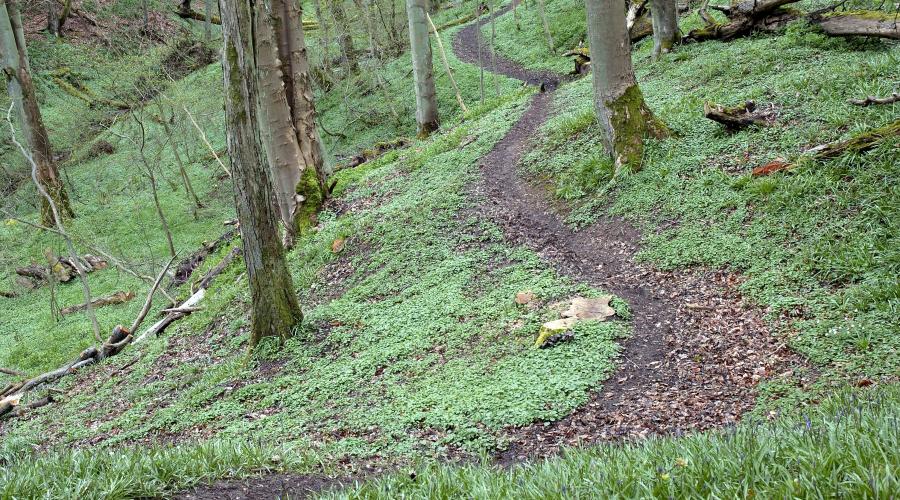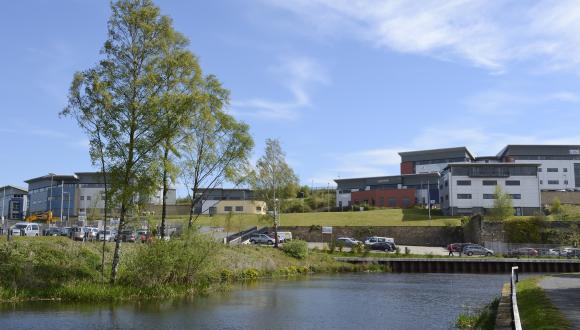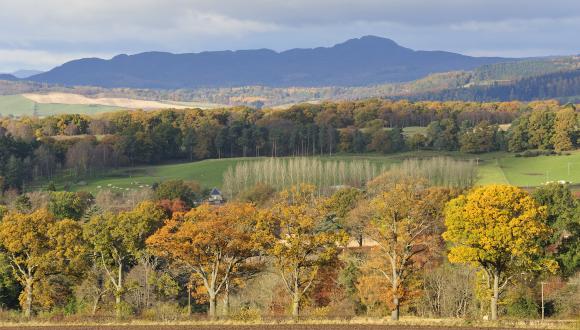
Planners and policy developers: relevant policy
The Habitats Directive and Scottish Planning Policy are of particular interest to strategic planners, development management planners and policy developers.
European and international references
Habitats Directive
Articles 3 and 10 of the Habitats Directive call on Member States to improve the ‘ecological coherence’ of Special Areas of Conservation (Natura 2000 sites). To be ecologically coherent, a site must have links beyond its designated area.
Article 10 asks Member States to “endeavour, where necessary, in their land use planning and development policies, and with a view to improving the ecological coherence of the Natura 2000 network, to encourage the management of features of the landscape which are of major importance for wild fauna and flora.”
It goes on to mention some specific features that can contribute to coherence: “Such features are those which, by virtue of their linear and continuous structure or their function as stepping stones are essential for the migration, dispersal and genetic exchange of wild species.”
From an ecological point of view, meeting Article 10 isn’t limited to focusing on these specific features. You should consider any features that may improve ecological coherence.
Birds Directive
Article 3 of the Birds Directive refers to the need to undertake conservation actions both within and outside Special Protection Areas (Natura 2000 sites).
Member States should ensure that the “preservation, maintenance and re-establishment of biotopes and habitats shall include the following measures: ... (b) upkeep and management in accordance with the ecological needs of habitats inside and outside the protected zones”.
Convention on Biological Diversity
This international treaty to conserve biodiversity was launched at the 1992 Earth Summit in Rio de Janeiro. The associated programme of work for protected areas, adopted in 2004, stressed the need to integrate all protected areas into the wider landscape by 2015.
The Convention also led many countries to develop Biodiversity Action Plans.
Plan of Implementation of the World Summit on Sustainable Development
As part of the plan to implement the resolutions made at the 2002 Earth Summit in Johannesburg, signatories agreed to “promote the development of national and regional ecological networks and corridors”.
The Intergovernmental Panel on Climate Change has also highlighted the need for habitat networks as a potential adaptation option. Its Climate Change 2001 report suggests “a network of habitats and habitat corridors will be required to facilitate migration through the landscape.”
Pan-European Ecological Network
The concept of a Pan-European Ecological Network was formally endorsed in 1995 at the Environment for Europe Ministerial Conference in Sofia.
Although not a specific policy instrument, the concept was incorporated in the Pan-European Biological and Landscape Diversity Strategy (1996).
Water Framework Directive
The Water Framework Directive doesn’t specifically refer to habitat networks. But it does require Member States to plan and act on a larger scale than individual sites.
The Directive requires the Scottish Environment Protection Agency and other responsible authorities to plan on a river basin or whole catchment scale.
Some of the actions needed to bring bodies of water up to the required ecological status may also improve habitat networks. For example, adding sustainable urban drainage systems can create new areas of habitat, which could form part of a network and help to improve water quality.
Prioritising actions that meet Directive needs and deliver habitat networks will give Scotland a greater environmental return for money spent.
UK references
Conservation Regulations
The Habitats Directive is transposed into UK law through the Conservation (Natural Habitats, &c.) Regulations 1994
Regulation 37 states: “For the purposes of the [Town and Country Planning Acts], policies in respect of the conservation of the natural beauty and amenity of the land shall be taken to include policies encouraging the management of features of the landscape which are of major importance for wild flora and fauna.”
It then goes on to list the same specific features as Article 10 of the Habitats Directive.
Scottish references
Scottish Planning Policy
The Scottish Planning Policy (2014) states that the planning system should “seek benefits for biodiversity from new development where possible, including the restoration of degraded habitats and the avoidance of further fragmentation or isolation of habitats”.
And in relation to woodland specifically: “If a development would result in the severing or impairment of connectivity between important woodland habitats, workable mitigation measures should be identified and implemented, preferably linked to a wider green network”.
Scotland’s Third National Planning Framework includes the Central Scotland Green Network as one of the 14 national developments seen as vital to Scotland’s long-term development.
The Framework states “This densely-populated area is rich in cultural, industrial and natural assets. However, in some places past land use has left a legacy of disused land, poor quality greenspace and fragmented habitats. Here, a step change in environmental quality is required to address disadvantage and attract investment, whilst sustaining and enhancing biodiversity, landscape quality and wider ecosystems.”
It also states “Scotland’s 2020 Challenge for Biodiversity aims to develop a national ecological network over time, and there is an opportunity to link this with green networks in and around our towns and cities. Benefits will be achieved by taking a long-term, strategic approach to environmental management and enhancement.”
Nature Conservation Act
The Nature Conservation (Scotland) Act 2004 places a specific duty on all public bodies to further the conservation of biodiversity and to consider Scotland’s Biodiversity: It’s In Your Hands.
Among other things, the 2004 strategy aims to achieve by 2030 a landscape where “Organisms can move, feed, reproduce and disperse effectively, and are better able to adapt to changing circumstances of land use and climate change.”
Scottish Forestry Strategy
Outcome 3 of The Scottish Forestry Strategy (2006) – the starting point for regional forestry strategies – states that one aim is to “promote a landscape-scale approach to habitat networks” to help protect and enhance biodiversity.
Environmental assessment legislation
Neither the Environmental Impact Assessment (Scotland) Regulations 1999 nor the Environmental Assessment (Scotland) Act 2005 specifically mention habitat connectivity. But they do ask everyone who carries out such assessments to consider impacts on biodiversity, flora and fauna.
New developments, policies and strategies that may cause habitat fragmentation can be considered to have a negative impact on biodiversity. Your Environmental Statement should reflect this.
Expecting these assessments to consider habitat connectivity may, in the long term, be effective in helping to reduce the effects of habitat fragmentation. To find out more, read the case study on transport corridors in Bulgaria





